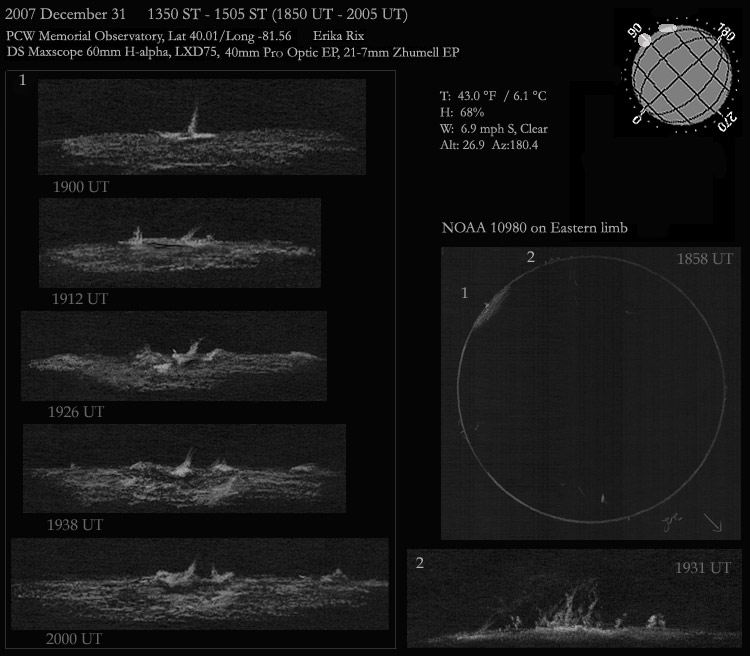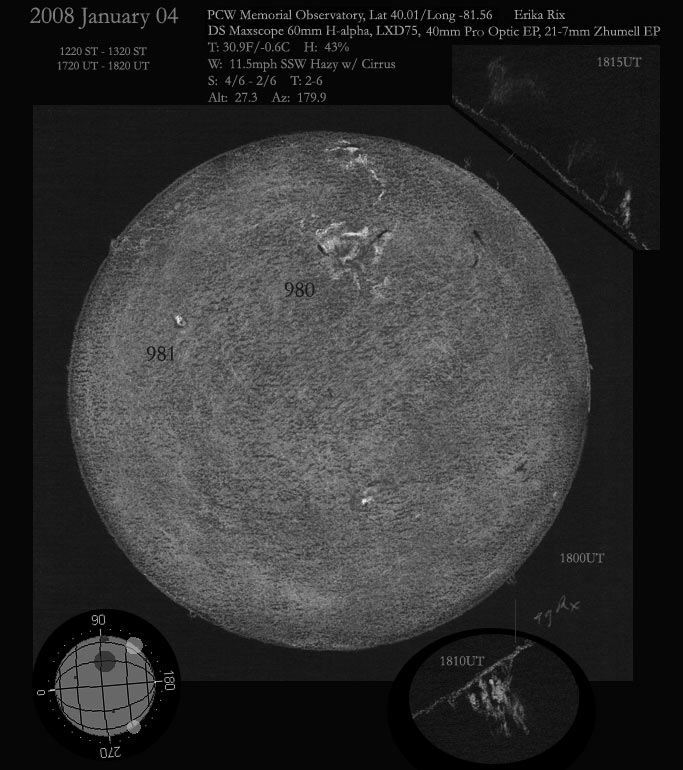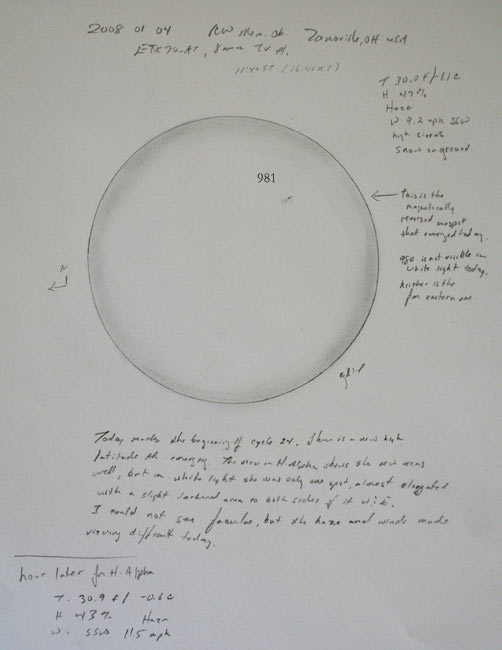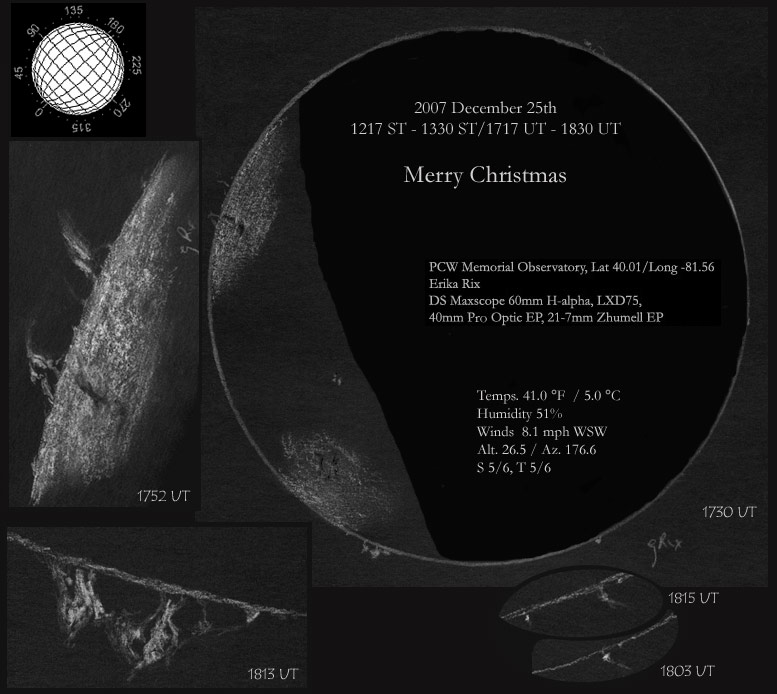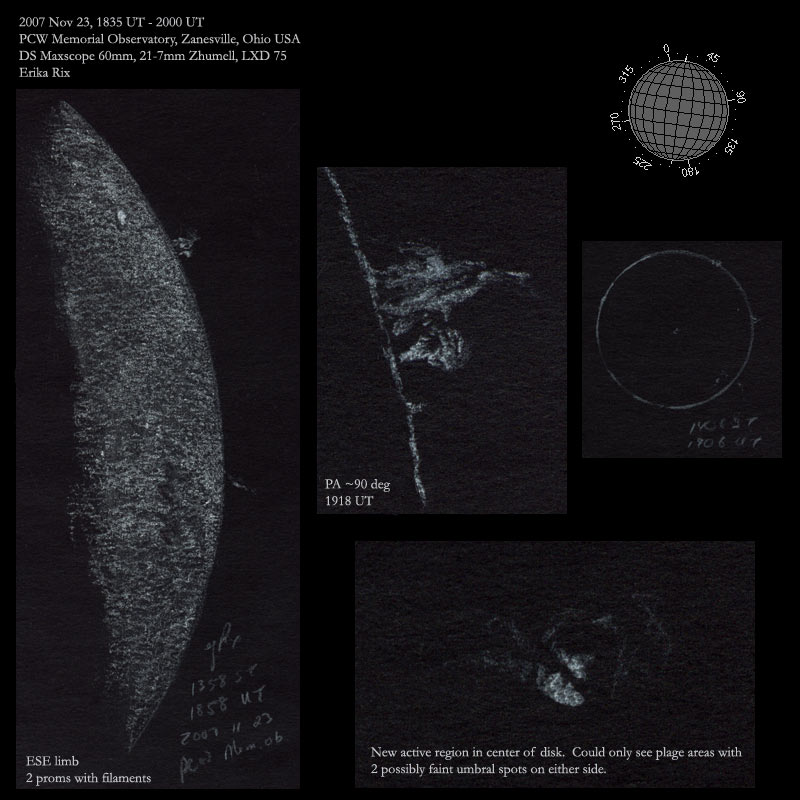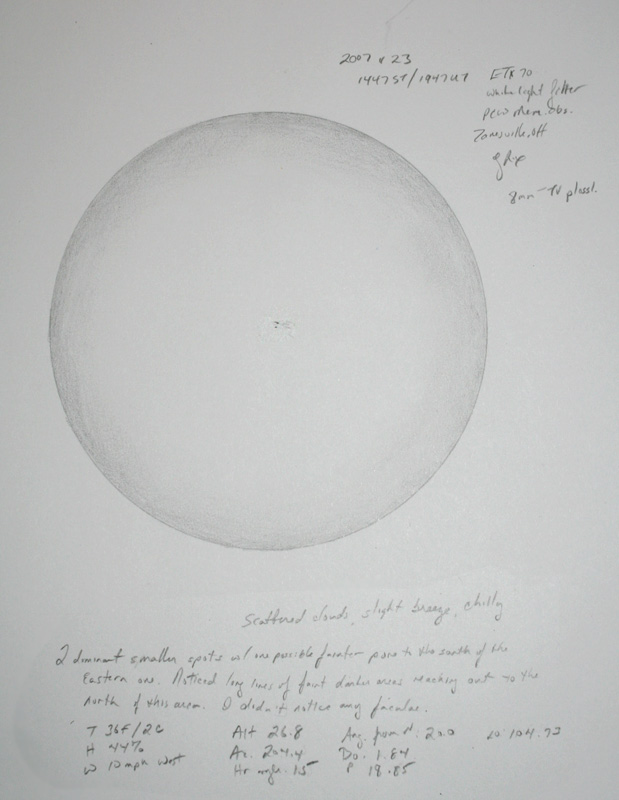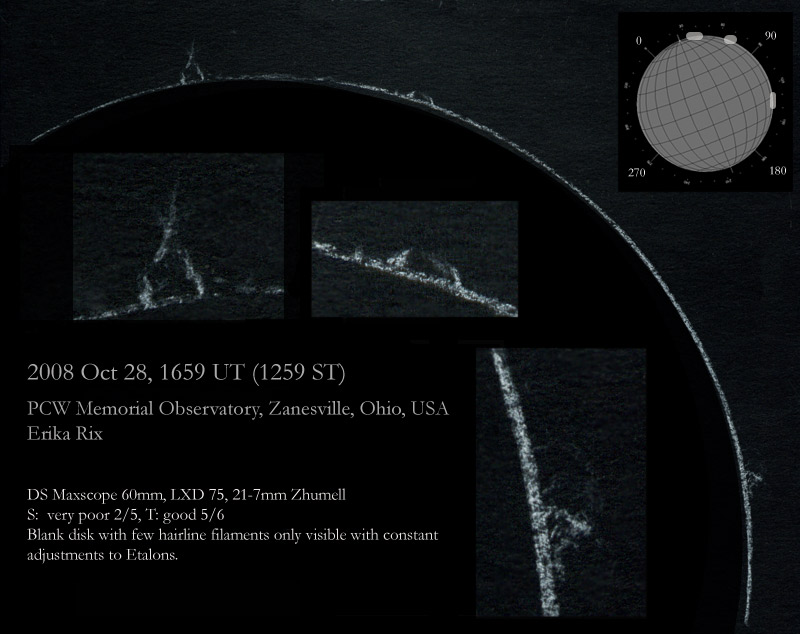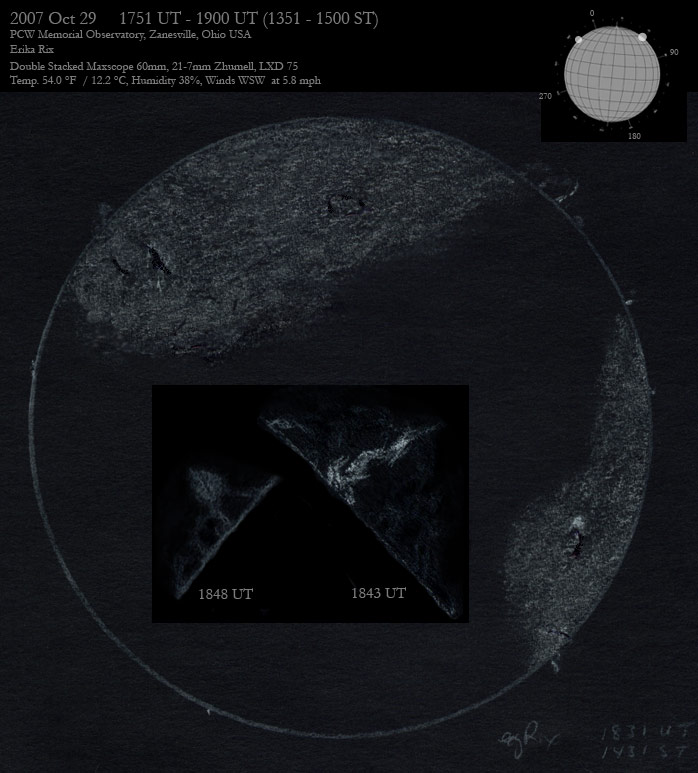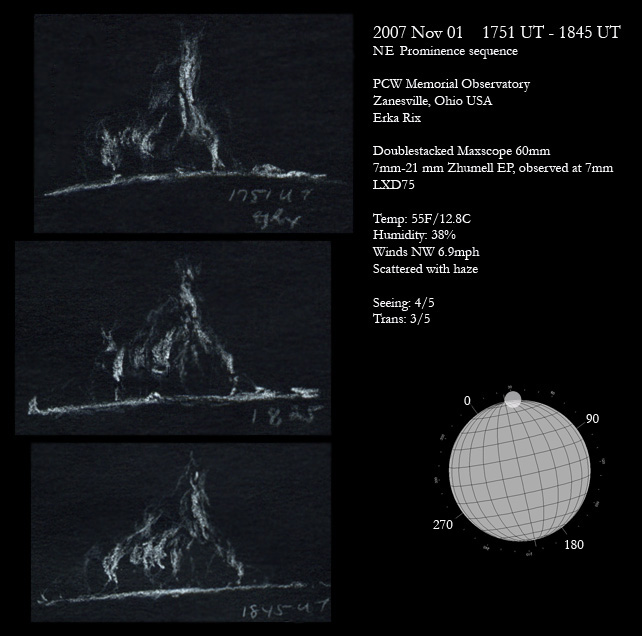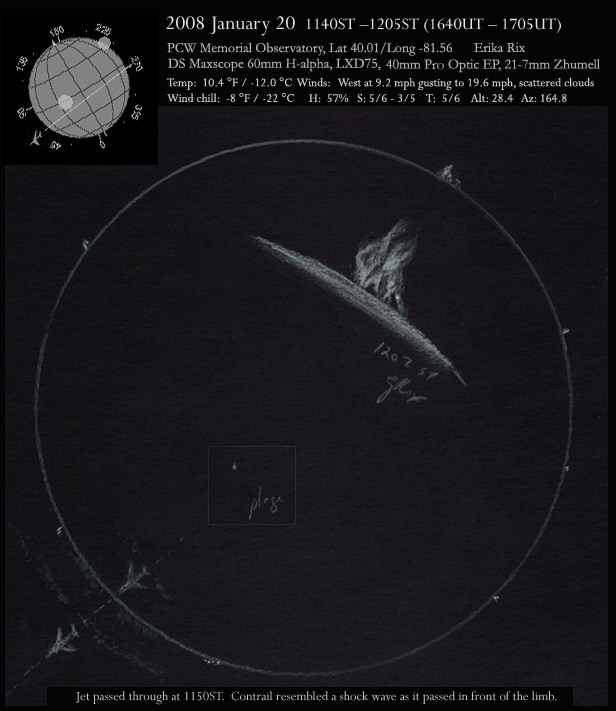
Sun and Jet, SW prominence and visitor
By Erika Rix
2008 01 20, 1140ST -1205ST (1640UT – 1705UT)
Solar h-alpha
PCW Memorial Observatory, Zanesville, Ohio, USA, Lat: 40.01 / Long: -81.56
Erika Rix
Temp: 10.4 °F / -12.0 °C
Winds: from the West at 9.2 mph gusting to 19.6 mph, scattered clouds
Wind chill: -8 °F / -22 °C
Humidity: 57%
Seeing: 5/6 with moments of 3/5
Transparency: 5/6
Alt: 28.4 Az: 164.8
Equipment:
Internally double stacked Maxscope 60mm, LXD75, 40mm ProOptic Plossl, 21-7mm Zhumell
Sketch Media:
Black Strathmore Artagain paper, white Conte’ and Prang pencils, white vinyl eraser.
Added -37 brightness, +1 contrast after scanning.
Tilting Sun program used for digital Sun insert.
The first thing that caught my attention this morning during the observation was the
bright substantial prominence on the SW limb. A careful scan around the limb of the
Sun showed a total of six prominences, all quite a bit smaller and varying in
shapes. The SE prom resembled the letter A. Moving to the NE, the next prom looked
like a flag waving to the North. Further NE, the prominence hugged the limb,
spreading out like an inchworm. The next three on the NW side were slender fingers,
two of them dual fingers.
It was very difficult to move around wearing my coveralls, oversized thick winter
gloves that I had to borrow from my husband because I still can’t find mine after
the move last spring, and heavy winter muck boots. Leaving the gloves off my
fingers for more than a few minutes made them a little painful with the wind that
came in over the observatory wall as well as the metal knobs on the telescope. I
was able to do part of the sketch with Paul’s gloves on, but had to add the finer
details without them. Tuning and focusing the scope was a chore as well.
I did manage to catch a bright plage area to the eastern 1/3rd of the disk. It was
fairly small and compact and I almost missed it altogether as I was moving the disk
around in my FOV looking for surface details. Other than that, surface details
were insignificant. I lacked the ambition to drag out my ETX for white light filter
views to see if there were any signs of a sunspot near the plage that I saw in
h-alpha.
The excitement of the session, other than witnessing the beautiful SW prominence,
was a jet crossing in front of the Sun. The contrails started out small and then
resembled a shock wave as it crossed in front of the solar limb to the NE and then
spread out even more as it traveled further away. It almost reminded me of a
Moreton wave from photos I’ve seen. I’ve tried to add that affect to my sketch,
realizing that shape of the jet is most likely very inaccurate at best. My
concentration was on the contrails, and the jet shape was just a few flashes in
front of me as I was trying to capture the whole scene. The most remarkable part of
the contrails was the “pulling effect” as it crossed the limb. It looked like the
jet was pulling streamers, almost smears, of plasma away from the Sun. Very cool,
indeed.




